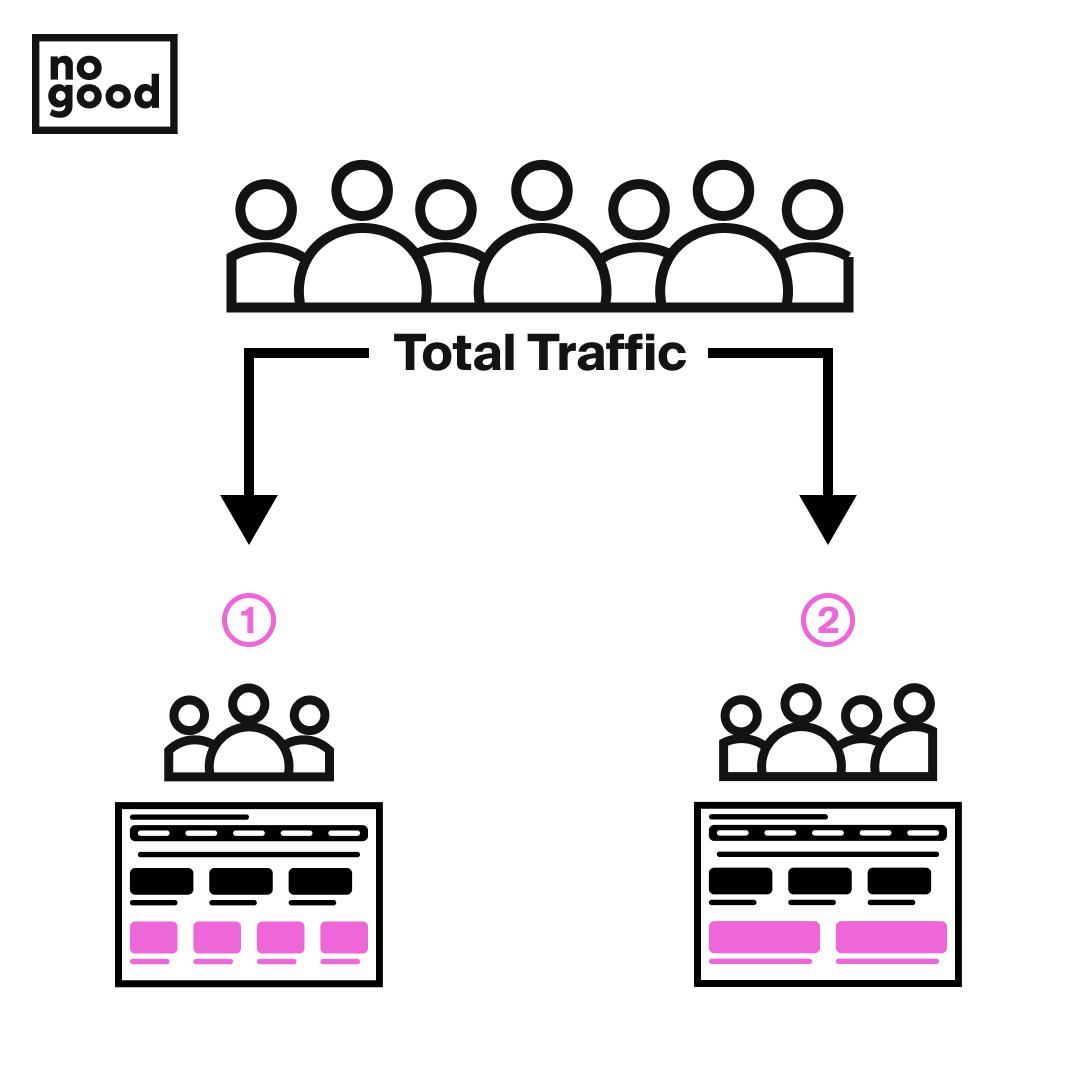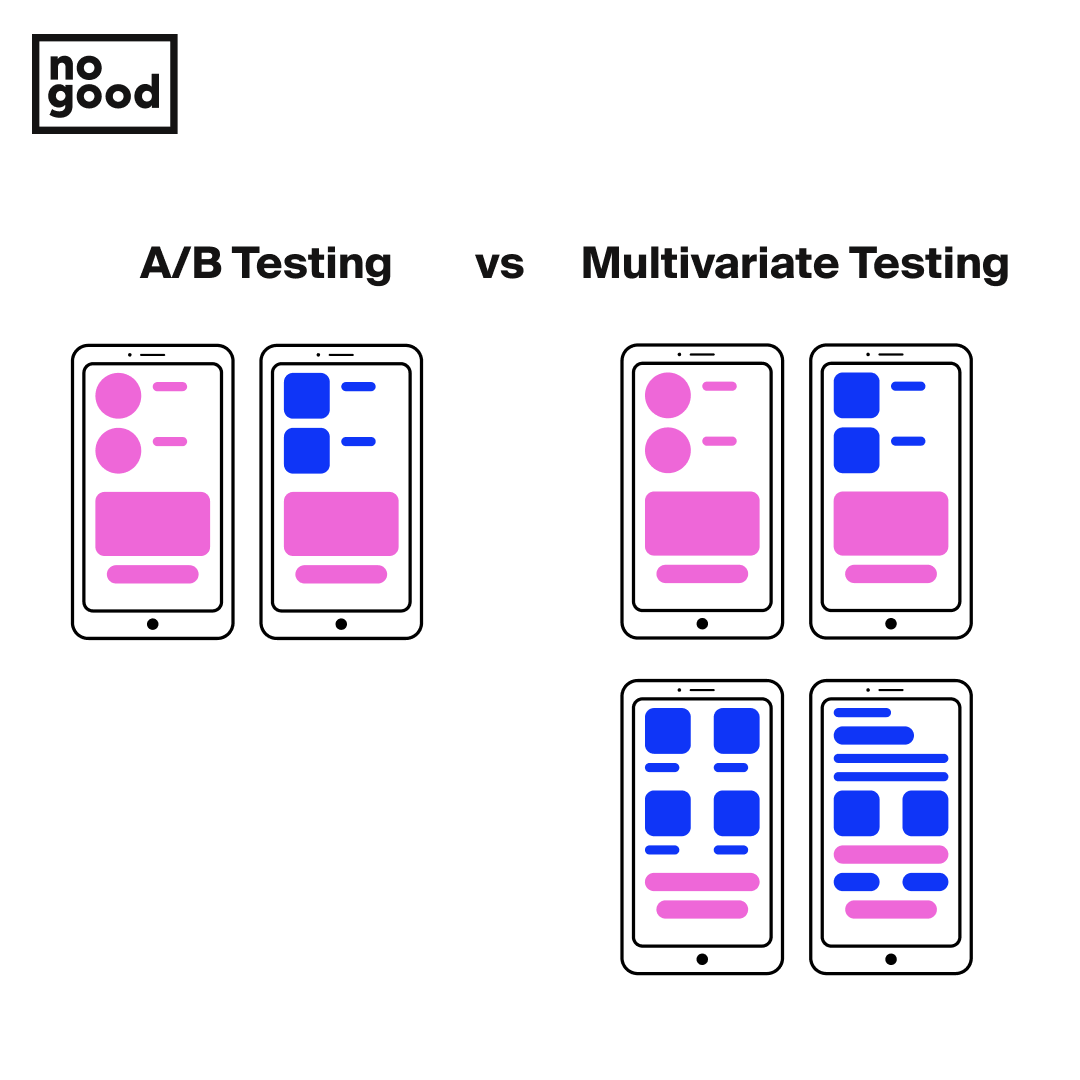Whether you know it or not, testing is the heartbeat of SEO. Even right now, in my head, I’m trying out different sentences to see what makes sense and make sure my sentences flow. Testing my ideas to make sure they are coherent and of course, SEO friendly. Crafting an excellent title tag takes a great deal of testing. What’s my targeted keyword? How can I incorporate that without being wordy? Does this version work better than that version?
When people hear SEO testing they don’t often think of these SEO basics being under the microscope, but simple experiments like that work all the time! SEO testing can cast a wide net in terms of testing opportunities and the same goes for strategy and implementation.
By reading this article you will:
- Have a better understanding of the concept & value of SEO testing
- Know the different types of tests and experiments you can and should run
- Learn how to run and track an SEO test
What Is SEO Testing?
SEO testing is a research and hypothesis-backed process that measures the impact of a change or set of changes to a page or SEO element measured against a predetermined set of KPIs. These KPIs could include pure organic traffic increases/decreases, the total number of clicks, overall impressions, click-through rates, etc.
The SEO testing process allows you to test changes you suspect will grow organic traffic without deploying them either site-wide or as a permanent change. Every test should be seen as a success, regardless of the outcome, because it really shows you what works and what doesn’t. So that begs the question if you’re not testing, how much organic traffic are you leaving on the table?
Value Of SEO Testing
The value of SEO testing is it gives you the opportunity to make impactful discoveries about SEO and your audience. This might lead to more organic traffic, but it’s also likely to lead to happier customers and more money all around. That’s a win, win, win.
SEO testing is also very cost-effective. Some costs will come into play when using an SEO testing tool but for the most part, changes and analysis can be tracked using Google Search Console, Google Analytics, Google Optimize, and any other third-party analytics tools you might already have in your tool belt. Once the changes have been planned out and documented, task-dependent edits can typically be made pretty quick.
Types of SEO Testing
There are two main types of SEO tests; split testing (A/B testing) and Multivariate testing. There are good use-cases for each type of testing but the one you choose should be the one you’re comfortable with testing/recording or may simply come down to the necessities of your experiment.
1. SEO Split Testing / AB Testing

Split testing or A/B Testing simply means splitting your pages evenly into two different groups and only making a single change that impacts one variant. The benefit of doing these tests in this way is that it removes any possibility of seasonality playing a role in traffic fluctuations during the test. This assures the test is reflective of your changes.
2. Multivariate Testing
The same idea applies to multivariate testing, the difference being you’re testing more than just one element at a time. Instead of testing just one element, these tests are aiming to identify which arrangement or combination of elements produces the best results.

How To Run an SEO Test
1. Identify KPIs
What are you trying to improve? Are you hoping to get more people to click through to your result by testing a meta description change? Your goals and KPIs will influence the elements you decide to test.
Not sure what you’re trying to achieve just yet? No problem! If you have a hunch that something might work and improve things all around, that’s awesome. In this scenario, you’ll want to have all hands on deck to track the impact. This is likely true for every test, but you will likely see an impact on things you weren’t even testing for. You might find out some interesting things about your audience and how certain changes can impact ranking signals.
2. Form a hypothesis
You want to make a comprehensive statement that encompasses all of the different aspects of your test, control group, variant group, your changes, predicted impact, and any other important details. By forming a hypothesis you’re laying out your theory and can go back after you’ve gathered your results and make a clear determination if your hypothesis was in fact correct.

3. Take note of current & historical metrics
It’s always a good idea to take a look at your historic trends for the pages you plan to test. This may influence the time of year you run the test, but for the most part, it’s always a good time to test an idea. Simple alterations to an SEO element can provide increases to all of your organic ranking signals.
4. Decide how long to run the test
Depending on the size of your test groups and traffic volume you may want to alter your testing timeline. A general rule of thumb is to run your tests from one to two weeks. This allows the test to gather feedback from the full scope of website visitors and each one will interact with your changes in their own unique way. With enough participants, you will be able to identify a pattern and what’s working and not working.
5. Track metrics
If you plan to use a tool in your process, that’s great! If not, you can set up a process using free tools that are likely already in place like Google Search Console or Google Analytics. If you’re using any other third-party tools like SEMRush or Ahrefs you can set up keyword tracking if it’s applicable to your test.
6. Make changes
Time to make those changes! Cross your fingers, say a little prayer, and set your changes live. Don’t be nervous though, like I said, every test is successful. Have someone check your work, triple-check, and make sure you have everything set before you deem the test ‘started’. You don’t want to go back and make any changes until your testing timeline has concluded.
7. Record results
Go back and use the benchmarks you set prior to the test to identify if your hypothesis is successful or not. Understand the full depth of the information you received from running this experiment, they’re usually a lot to unpack and learn at the end. Once you understand the real impact, time to start over!
5 SEO Testing Ideas
1. Title tag and meta description changes
Title tag and meta description changes are great tests to run as they are usually straightforward and can have a big impact. Maybe you want to target a new keyword in metadata, maybe you want to write it so it’s more conversational and measure the impact of favoring either search engine vs searcher.
2. Header tag changes
Header tag changes are another good area to test as Google and other search engines have become better at serving up portions of articles as featured snippets which provide a better click-through rate depending on the searcher’s intent.
Header tags are a great way to incorporate high-volume secondary keywords that you can use to try to rank for additional keyword variants that can provide supplemental traffic to pre-existing blog content.
3. Addition or removal of images
Images are often favored when it comes to digesting digital content. It helps reinforce the idea of whatever piece of content you’re reading. Sometimes images can get in the way of a user from exploring your website and can create friction in terms of UX. With Core Web Vitals fully rolled out on desktop and becoming a stronger ranking factor, speed is something everyone is trying to get a hold of. Removing images can be a way of speeding up the page and recording the impact of potentially faster loading times.
4. Editing of CTA call out text
You never know what action words resonate with your audience the most. Changing CTA text could lead to higher CTR on your content offers. If you’re looking to get more people to sign up for your weekly newsletter with the side-bar form, you can test changing the button text from “Submit” to “Sign Me Up!”. This simple change could lead to an unexpected increase.
5. Add a video element to your blog post
Video elements are always great but I feel are most helpful when they provide an expert opinion, or better explanation of a complex topic. Video elements are often displayed in search results and you may even see an increase of referral traffic from Youtube (If you host it there) by adding a video.
Use SEO Testing To Improve Your Organic Traffic
SEO testing is an essential part of growing your website’s organic traffic. You’re likely already doing some form of testing when you create new content or optimize old ones but have you ever actually tracked the impact? Do you know if the optimization efforts are successful? If you’re asking yourself these questions it’s likely you need a testing process in place.
A testing process can help you formulate ideas and experiments that are research-backed so you get the most out of your efforts. It’s absolutely critical that proper analytic channels are in tune with your test if you’re planning on not using a tool. Once all systems are go, launch!




